No, not that way. 😂
Writing is a very mental thing to do. Erm. Yes. It uses a lot of brainpower and most of us write on computers, laptops, our phones. There is very little physical to the work. And that isn’t all bad. Never had a hobby take up that little physical space in my life. Love it.
But sometimes, that is detrimental. Being able to touch and interact with something gives it a different level of being real. And as much as I love putting a whole-ass novel into my brain as a special interest, sometimes I need more.
Many of us, I included, print out the ms when we finished for editing. Or just to be proud of the book we wrote, because, yay! Writing a book is hard and finishing a book is a great feat. 🥳
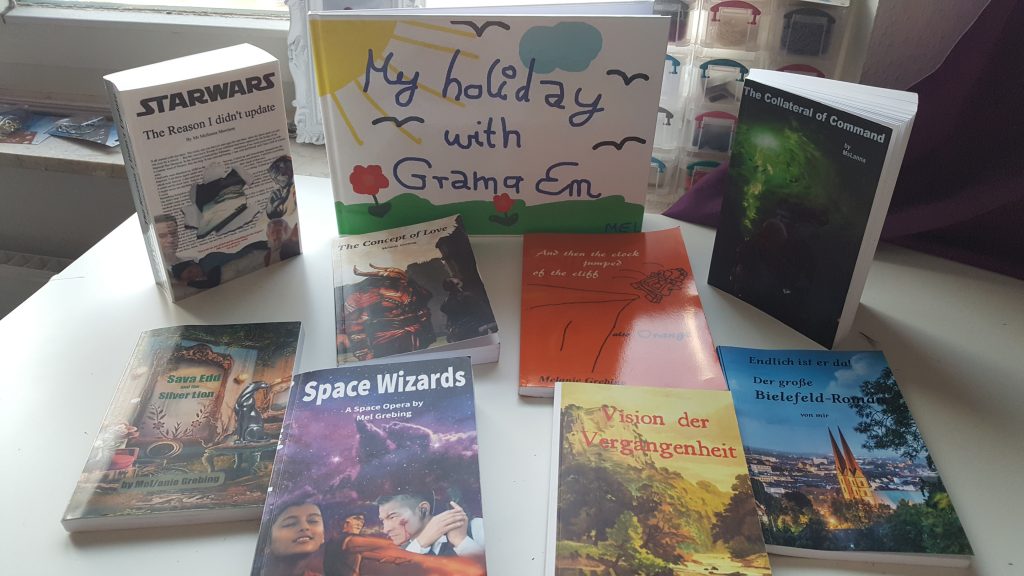
And it helps. But sometimes I need to touch my story before it is done. So far, I have found two ways to interact with my manuscript. The chalk board and the magnet wall.
The chalkboard is just foil I glued to a wall so I can write on the space with chalk. It is great because I can just erase things. I can draw with coloured chalks, and everything is easily removable. I used it A Lot for Horny WIP.
I split the plot into the plot!plot and the sex!plot. Putting the two columns next to each other showed me where there was an imbalance (always *le sigh*) and work to improve that.

I checked of bits I had written. I add more scenes as I they came to me. For act 2 I ran out of space for plot scenes but by then I had mastered the hammock and was fine.
I also used the chalkboard for editing another manuscript. Drew a nice little image on there with the pillars of the story and the things that needed editing in overall.
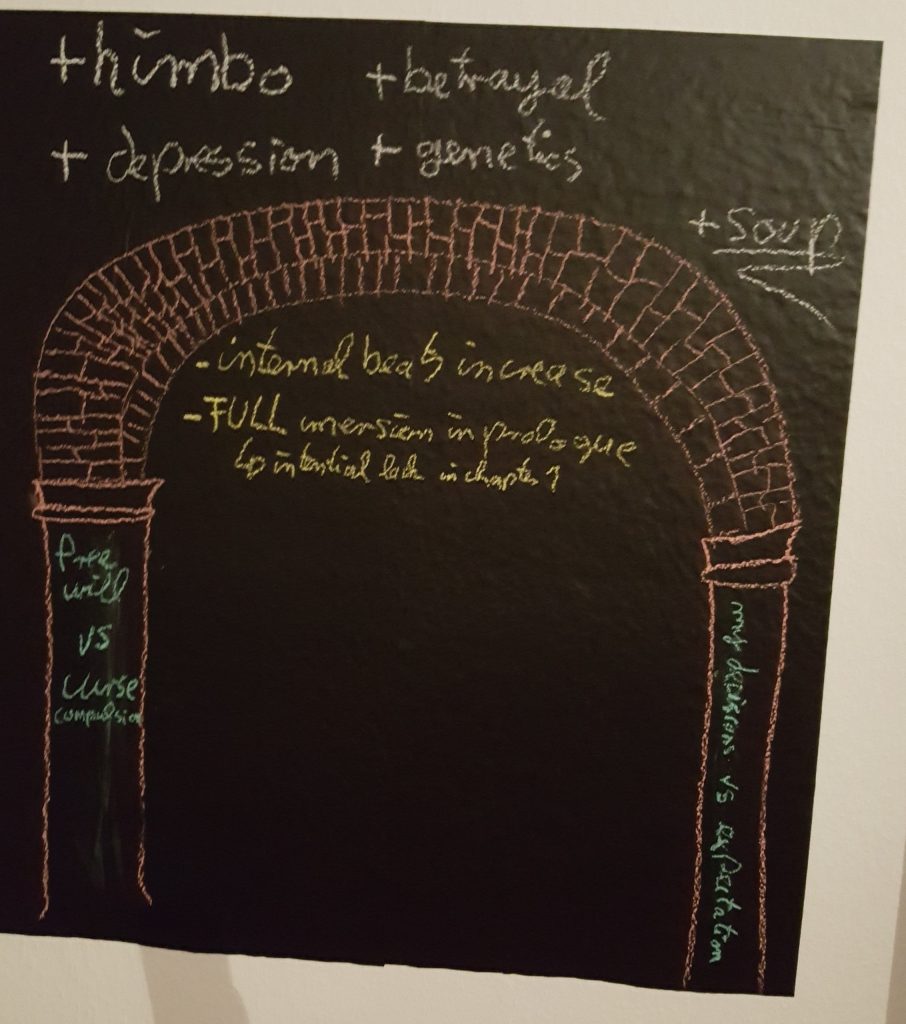
And whenever I got stumped or needed a break? I could just look at the picture and go: oh, soup. Yes, need more soup! As a very optical person, the colour-coding with the chalks helped me a lot, too. I finished the edits. The ms is out with betas. I may go back to this when I do the next round of edits after finishing The Losing Game.
Ah, The Losing Game. Right now, it really feels like one. I have finished the hammock. It is incoherent and has no tension At All. I know this. But the words are there which is a good first step. Enter the magnetic wall.
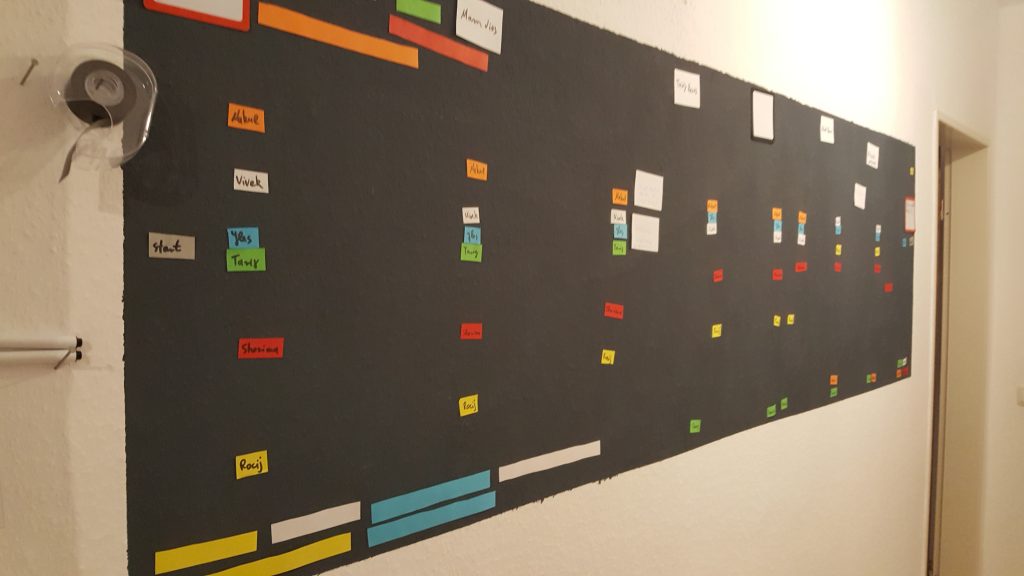
Before I used it to put visualise the relationships of the characters, who is close to who and about when. I think I have internalised that by now. So what I did is put all the scenes I have on little index cars. And then I wrote down all the scenes that needed happening on index cards. And then I put them all up on the wall. (And then I despaired for a bit because so many scenes.)
Then I started pushing the scenes around on the wall. This doesn’t work with the chalk boards. It is too much erasing and writing. But on the wall, I just pick off the card and put it somewhere else. I added my coloured names to scenes to see if there is an imbalance (an hoo boy, there was).
I’m not finished rearranging yet, but it already looks a lot more even and balanced than before. I may need different names to colour-code with though.
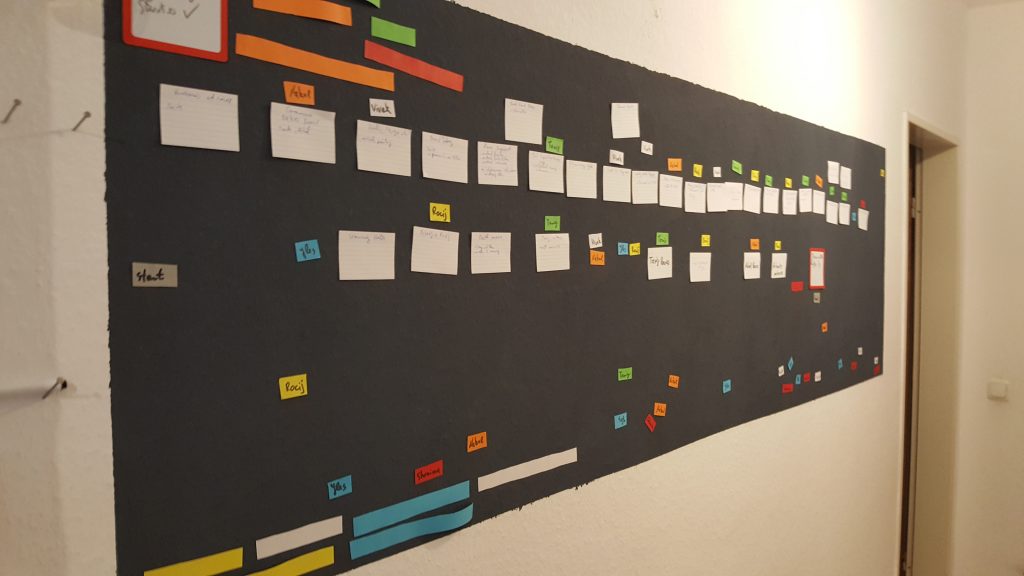
It also helps that I finally found the end of act 2. A lot of handwavarium I wanted to do but didn’t know how will now vanish in the time skip. 😇
It helps that I’m writing in Scrivener that allows me to rearrange the scenes as easily as my magnetic wall. Next step will be smoothing of the new transitions, writing of the missing scenes and on to the last act. (I’m so sorry Ylli. 😅)
Other things I did.
For a non-liner short story, I cut up the story and shuffled the pieces around on the floor. I marked the words I wanted to be hyperlinks to other bits and made sure every piece had at least two signs for coming in and two for going out.
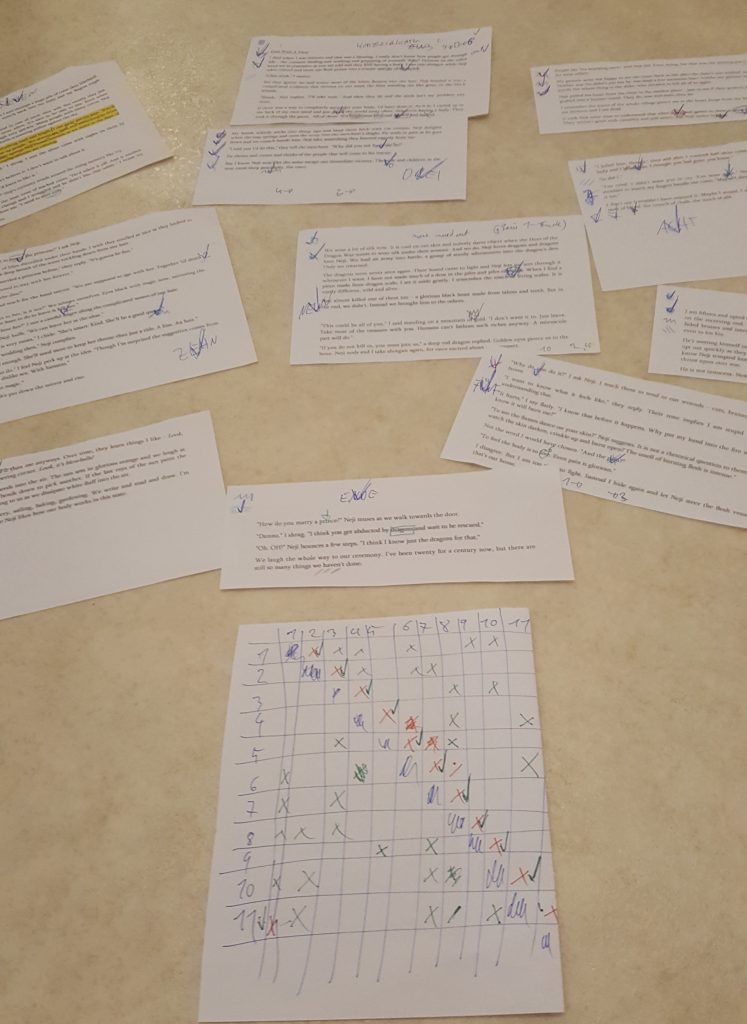
So, find a way to bring your words into the physical world to play around with them. I find it helps me a lot.